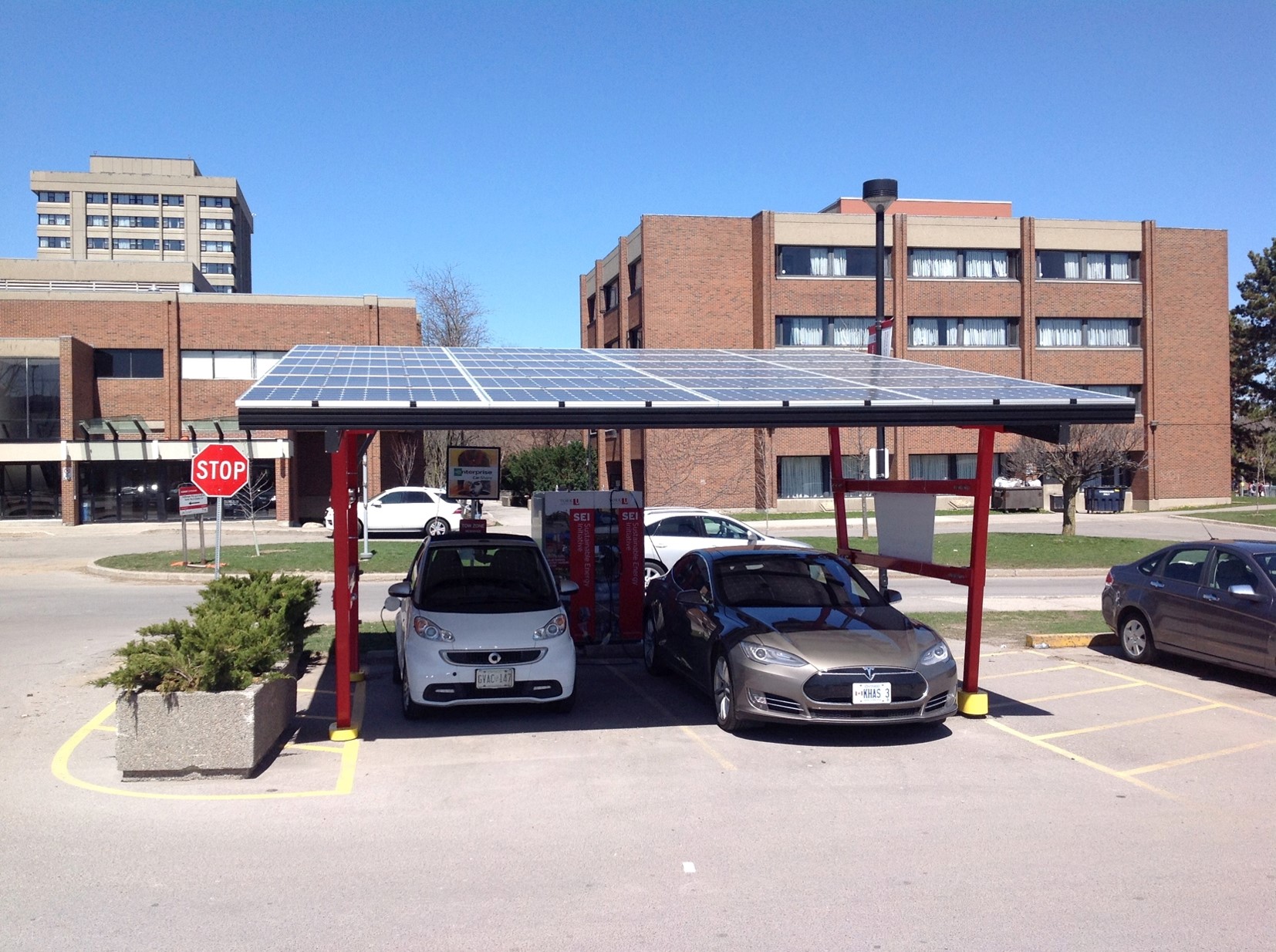York University – Solar Charging for Electric Vehicles

Projects Sponsor
 Experimental / Experiential Solar Charging Station Project spawn knock-offs on 3 continents!
Experimental / Experiential Solar Charging Station Project spawn knock-offs on 3 continents!
The original goal of York University’s Free Solar Charging for Electric Vehicles project, led by Professor José Etcheverry, was to design and build a photovoltaic solar charging (PVSC) station using made-in-Ontario materials and know-how. They hoped that their efforts would inspire the York University community as a whole to consider the great potential of using renewable energy to power transportation solutions that can lower GHG emissions while increasing local resilience. In the end, they did much more than that, inspiring efforts on three other continents
They also planned to use the data gained through the project to inform ad hoc policy recommendations.
The idea of charging shared electric vehicles was conceived during a 2014 visit to Woodstock, Ontario. At the time, Jay Heaman from Woodstock Hydro was involved in the creation of photovoltaic (PV) canopies in old transformer sites scattered throughout Woodstock. Those PV canopies provided the inspiration for the team’s project and they set out to build their own PVSC station.
The project’s emphasis was on experiential education, particularly learning by doing. From the start all team’s members were involved in all aspects of project implementation, the point being to maximize the learning by spreading around the doing. Also, in order to enhance the learning and problem solving opportunities, and to demonstrate that that system could be implemented anywhere in the world, the students did as much as possible themselves without using machines.
After securing project start-up funds from the Toronto Atmospheric Fund and the Metcalf Foundation a team of York University professors, undergraduate and graduate students, facilities staff and private sector leaders was assembled to design and implement the PVSC station.
The team used Solmetric equipment to evaluate sites for their solar potential. This equipment enabled them to assess possible shade problems at a location and define the suitability of a site for a solar project. It was important to test the PVSC station in a place that offered both good solar access plus and strong knowledge mobilization potential. The power had to be there, and the people had to know to use it.
Once their design was finalized, implementation in a very visible site at York University’s Keele Campus was the next step. They partnered with leading Ontario firms to procure components and to implement the project (Silfab, Kinetic Solar, Canadian Energy, Daymak, Joshua Four, Telitnet). Specialized equipment was handled by experts who were brought into the university to show the assembled team of Canadian and international students the ropes.
Many of the results of the project had been anticipated. As hoped, the project implemented innovative strategies for showing how to de-carbonize transportation while achieving experiential education goals. As a direct result of the data collected, the team was able to make multiple recommendations. Among other things they suggest that Ontario provide an “incentive system to achieve a network of charging stations with dedicated renewable energy generation and battery systems for public electric vehicle (EV) charging” and “Expand the current EV incentive system to increase the adoption of electric motorcycles and electric bicycles which can provide new affordable EV solutions for Ontarians”
Laudable as the project’s original goal were, the project’s emphasis on experiential education produced some more surprising outcomes; As the team members became more deeply engaged in learning by doing, the project’s scope broadened and they ended up working with people in several other countries. These collaborators then took their original project ideas and goals much further than its originators ever imagined possible.
As a result of the experiential education approaches employed by the team, they were able to engage not only the York University community but also students from Algeria, Chile and India who are now are actively applying what they learned in their home countries.
The team always knew that it would aid in the training of many undergraduate and graduate students, but no one involved foresaw how far the ripples of their local project would be felt around the world.













